 |
1. The
grasses Yorkshire Fog and Common Bent remained the overall dominant species in most
sections across the project site. The only
sections where these grasses were not the two most dominant species were sections 5
(control - no management) and 9 (hand weeding).
Yorkshire Fog had considerably decreased in
abundance in many of the sections from the previous year, while Common Bent had
increased.
Grass
Chart |
. |
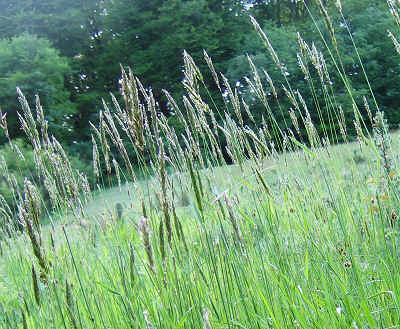 |
2.
Common Bent is often an important component of heathland vegetation. Other characteristic heath grasses such as Sweet Vernal
Grass (left), Velvet and Bristle Bents, as well as Purple Moor Grass, had become
established in several sections of the project site.
Sweet Vernal Grass is one of the earliest flowering
grasses and had usually died back by the time of the annual survey in July. Its abundance
on the site was therefore underestimated by the survey data. |
. |
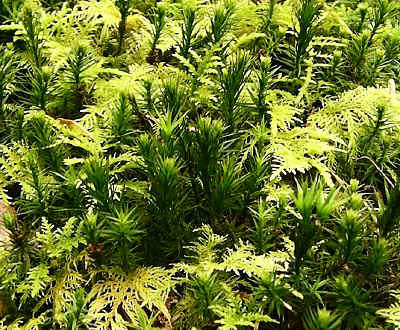 |
3.
A variety of mosses occurred across the project site, the most abundant being
Eurhynchium praelongum, Thuidium tamarascinum (left) and Polytrichum formosum (left). The first two
mosses often grew intertwined among the bases of the dominant grasses, forming an
extensive ground layer, while Polytrichum was usually found as thick carpets or patches in more open areas.
The extent of moss cover had increased substantially
across the project site since the previous year. Moss Charts |
. |
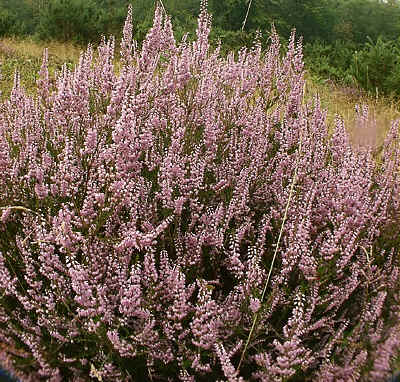 |
4.
The abundance of heath species and particularly Heathers had greatly increased. Heather
more than doubled in sections 6, 7 and 8 and appeared for the first time in section 4. Spring cutting appears to favour the development of Heather
and Bell Heather. Both these species appeared for the first time in spring cut sections on
the southern side of the project site, which had not been thought to be particularly
suitable for heath regeneration. |
. |
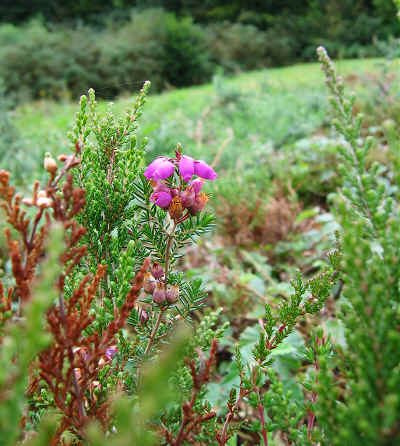 |
5.
The northern half of the project site is more open, with a
warmer, drier microclimate. This has favoured the development of heath species, with the
differently managed sections 7, 8 and 9 in the northern sector, most resembling heathland
habitats. All of these sections had considerable quantities of Heather. The distribution chart shows clearly how Heather was concentrated in the northern
half of the project site. Bell Heather (left -
centre) was much less widespread than Heather. Section 7 contained the greatest
abundance of Bell Heather. This had increased dramatically since the previous year. |
. |
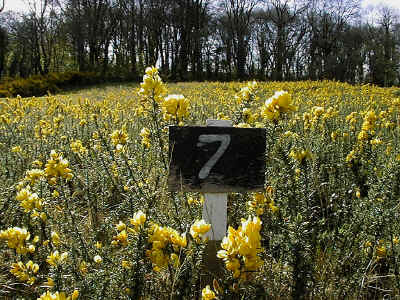 |
6.
Section 7 is not only extremely different to the two other spring cut sections, but is
also visibly entirely different to the differently managed sections on either side of it,
which share similar environmental conditions. This indicates that the marked differences
in vegetation in section 7 are a direct result of the management regime applied to this
section alone. The management of section 7
has differed from the other two spring cut sections in only two respects: - the initial
control of regenerating gorse and grasses. |
| The gorse control clearly had no effect on the gorse (above). Indeed, gorse
was dominant in this section within the first year. Gorse control would presumably need to
be applied more often than once, possibly at regular intervals, in order to have a lasting
controlling effect. The greatest
effect of the management in this section seems to have been in restricting grass
regeneration. At the start of the experimental management regimes, grasses were dominant
over most of the project site, outcompeting other herbaceous species. The restriction of
initial grass growth in this section seems to have been vitally important, allowing other
species the chance to become established to a point where they were then able to
successfully compete with the grasses. |
. |
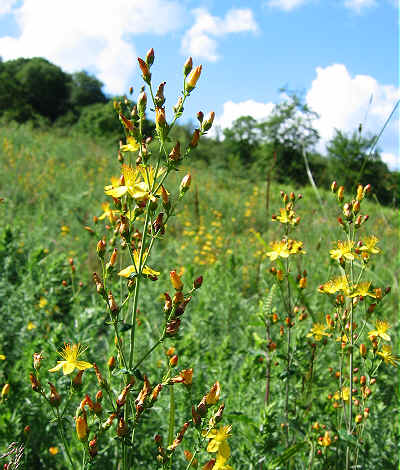 |
7.
By 1999, the regeneration of a heathland habitat
was well underway over much of the project site. Most of the typical heath species present
on the project site had increased in abundance, especially in the northernmost sector.
Slender St John's-wort (left) was one of the
few to decrease, particularly in section 7.
Charts
|
. |
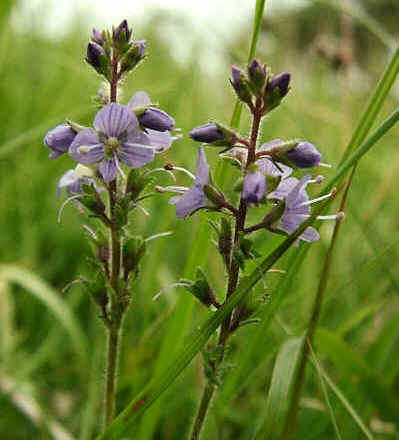 |
8.
Brushcutting three times a year has resulted in the
development of a diverse meadow habitat in section 6. The regular cutting has prevented
any one plant from becoming too tall, allowing lower growing herbs such as violets and
Heath Speedwell (left) to flourish. This section contained extremely thick clumps of Heather, too dense to
allow the establishment of any other plant species in its midst.
Section 6 contained little Bell Heather.
The amount of Pill Sedge had increased dramatically
in section 6. |
. |
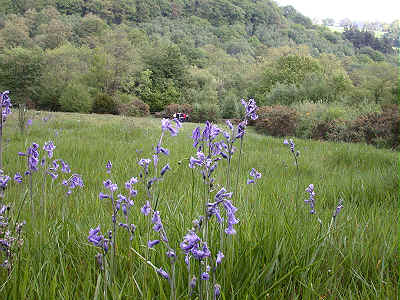 |
9.
Spring brushcut strips appeared to have fewer bluebells than those cut in the autumn,
although as the spring-flowering Bluebells have all died back by the time of the summer
survey, their true abundance is not reflected in the survey data. Bluebells were not recorded at all in sections 2 and 4 in the
survey, although they were certainly present.
Bluebells occurred across much of the project
site and were also found in sections 6 (left), 8 and 9.
Bluebell
Sampling Exercise |
. |
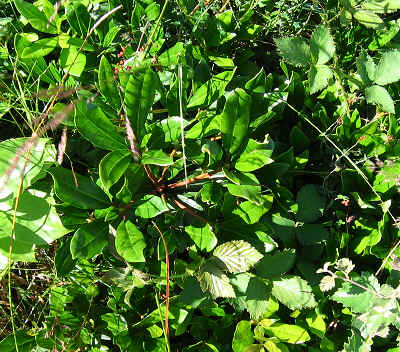 |
10.
Rhododendron
ponticum had reappeared in sections 5 and 6. This highly invasive, non-native species formed the
understory on the project site before the site was cleared for restoration. |
. |
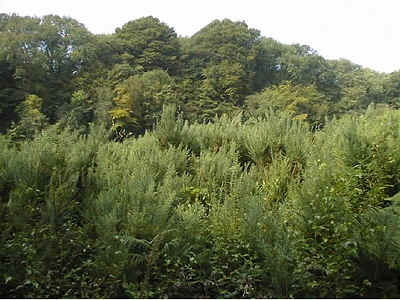 |
11.
Section 5 which has had no management since the
beginning of the experiment had grown into a virtually impenetrable thicket of
gorse, brambles and young trees such as Silver Birch, cherry, willow and Hazel . The vegetation in this section was approximately 2 metres
high.
Without management, the whole of the project site
would have looked like this. |